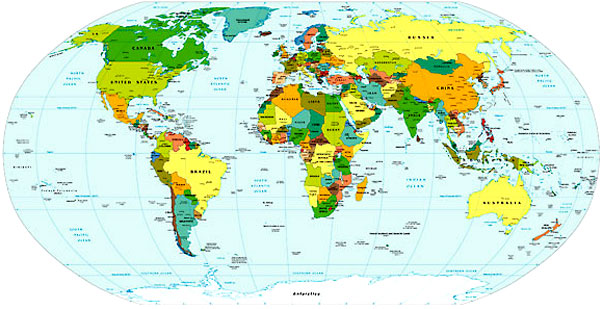 One could be forgiven for getting confused about the Democratic Republic of the Congo. For one thing, it’s often referred to as DR Congo, DRC or RDC. For another, it’s also been known by several other names: the Congo Free State (no, that does not mean that it’s free of the Congo; it’s not); the Belgian Congo, Congo-Léopoldville, Congo-Kinshasa and, of course, Zaire. My point is that they’re all the one place, and none of them are the Republic of the Congo, which neighbours it to the west. Got that straight? Good. Now it’s time to celebrate their Independence Day (from Belgium), so open your hymnals to 30 June. The year was 1960.
One could be forgiven for getting confused about the Democratic Republic of the Congo. For one thing, it’s often referred to as DR Congo, DRC or RDC. For another, it’s also been known by several other names: the Congo Free State (no, that does not mean that it’s free of the Congo; it’s not); the Belgian Congo, Congo-Léopoldville, Congo-Kinshasa and, of course, Zaire. My point is that they’re all the one place, and none of them are the Republic of the Congo, which neighbours it to the west. Got that straight? Good. Now it’s time to celebrate their Independence Day (from Belgium), so open your hymnals to 30 June. The year was 1960.So, there have been people there for thousands of years, but colonisers arrived late in the game—from the 1870s onward. And I expect a few of you have read Heart of Darkness, and thought about the snake that is the River Congo. Anyway, Europeans obviously decided to make up for leaving the locals in peace for so long by brutalising them when they finally arrived. They may have missed the slave-trade era, but they could be exploited for their rubber. King Leopold II made a lot of money out of rubber, and, not wanting to lose this source of income, sent in the Force Publique to terrorise the native population. How? Well, cutting off limbs in order to get the message across that rubber quotas had to be met. In a little over 20 years it’s believed that between five and fifteen million Congolese died as a result of this exploitation and diseases. Think about that for a moment. Now there’s a genocide no-one thinks about much. Luckily, at the time they did think about it—international pressure led to the Belgian parliament taking over the “Free State” from the king as a Belgian colony, improving the situation somewhat—they even brought about the teaching of a few Bantu languages in school, which was not a common practice at all in colonies. Doctors reduced the spread of African Sleeping Sickness, and the administration went in for economic reform and improvement of infrastructure.
 But while this was a definite improvement, there was still a distinct lack of political power for the Congolese—everything was decided in Brussels and Leopoldville. An independence movement grew slowly. Oh, and during their time as a Belgian colony, the Congolese invaded and occupied German East Africa (including what is now Rwanda) during World War I. Reportedly some of the Belgian-instituted racial policies that came about during their administration of the country were a precursor to the Rwandan genocide.
But while this was a definite improvement, there was still a distinct lack of political power for the Congolese—everything was decided in Brussels and Leopoldville. An independence movement grew slowly. Oh, and during their time as a Belgian colony, the Congolese invaded and occupied German East Africa (including what is now Rwanda) during World War I. Reportedly some of the Belgian-instituted racial policies that came about during their administration of the country were a precursor to the Rwandan genocide. Now, the name. When the country achieved its independence it chose the name “Republic of Congo.” However, their neighbours, also gaining independence (from France) chose the same name. For a while the two countries were known by their capital cities (Congo-Leopoldville; Congo-Brazzaville) and then in 1966 the name was changed to the Democratic Republic of the Congo. In 1971 it was changed to Zaire. In 1997 it was changed back. Oh, and I have to say I’m pleased that they changed the name of the capital to Kinshasa. I wouldn’t want to commemorate King Leopold II either.
There’ve been quite a few periods of political instability. Okay, that’s probably a severe understatement—it’s sad that political turmoil in emerging African nations is the rule, not the exception. The Mobutu era takes up most of the period of the country’s independence: 32 years to be exact.
Human rights seem to be unstable too—for instance, I read that “violence against women seems to be perceived by large sectors of society to be normal.”
Today’s poem, by Antoine-Roger Bolamba, comes from The Penguin Book of Modern African Poetry.
Portrait
I have my gri-gri
gri-gri
gri-gri
my calm bounding awake
clings to the wavy limbs of the Congo
never a stormy passage for my heart
bombarded with glowing oriflammes
I think of my silver necklace
become a hundred isles of silence
I admire the obstinate patience
of the okapi
bluebird battered in the open sky
what shipwreck
plunges it to the gulf of nothingness
nothingness empty of nightly entreaties
Ah! the broken resolutions
ah! the screaming follies
let my face fall upon its guardians
they are three villains
I say three in counting 1 2 3
who dim the ancestral mirror
but you fugitive image
I will see you on the height of dizzy anger
wait while I put on my brown my mask of blood
and soon you will see
my tongue flutter like a banner.
—Antoine-Roger Bolamba
from The Penguin Book of Modern African Poetry


No comments:
Post a Comment